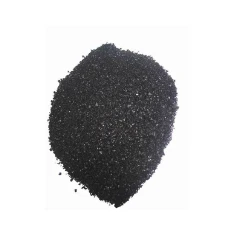China's Textile Industry and the Future of Dye Production Trends and Innovations
The Future of Dye Production in China Trends, Challenges, and Innovations
China has long been recognized as a global leader in the dye production industry, significantly impacting textile, leather, and various other sectors. The country's growing industrial capabilities, combined with a vast labor force, have positioned it as the largest producer of dyes worldwide. However, the intersection of environmental regulations, technological advancements, and market dynamics presents both challenges and opportunities for the future of dye production in China.
Historical Context
The roots of China's dye production can be traced back thousands of years, where natural dyes were used in traditional textiles. However, with the advent of synthetic dyes in the 19th century, China began to evolve its production techniques. By the late 20th century, the country had established itself as a major player in the global market, largely due to economic reforms and a push towards industrialization. The production of dyes in China now encompasses a wide range of products, including reactive dyes, acid dyes, and vat dyes, catering to diverse applications across industries.
Current Trends
In recent years, several trends have emerged that are shaping the future of dye production in China. One notable trend is the increasing demand for eco-friendly dyes. The global shift towards sustainability has pressured manufacturers to innovate and adapt to greener practices. This includes the development of natural dyes sourced from renewable resources, which pose less risk to both human health and the environment. As consumers become more conscious of their choices, brands are seeking suppliers that align with sustainability goals, prompting Chinese producers to invest in greener technologies.
Additionally, digitization and Industry 4.0 are making their way into dye production processes. Smart manufacturing technologies, including automation, data analytics, and artificial intelligence, are optimizing production efficiency and reducing waste. These advancements not only lower costs but also enhance product quality, ensuring that Chinese dye manufacturers remain competitive on the global stage.
Challenges Faced
china dye production

Despite its leading position, China’s dye industry faces significant challenges. One of the most pressing issues is environmental regulation. The Chinese government has introduced stringent measures to curb pollution and minimize the environmental impact of industrial activities. Consequently, dye manufacturers must adapt to these regulations, which can necessitate costly upgrades to production processes and wastewater treatment systems.
Moreover, the global market is becoming increasingly competitive, with countries around the world vying for a share of dye production. Emerging economies are setting up their manufacturing centers, prompting Chinese producers to innovate continuously to maintain their edge. Additionally, trade tensions and geopolitical factors can disrupt supply chains and impact exports, posing further risks.
Innovations Shaping the Future
In response to these challenges, the dye manufacturing sector in China is witnessing a wave of innovation. Research and development efforts are focusing on creating new dyeing techniques that minimize water and energy consumption. For instance, advancements such as high-efficiency dyeing machines and the use of digital printing technology are revolutionizing how dyes are applied, reducing the environmental footprint associated with traditional processes.
Furthermore, collaborations between manufacturers, academia, and research institutions are fostering the development of alternative materials and processes. This spirit of innovation is critical for the industry to navigate the complex landscape and adhere to sustainability goals while meeting consumer demands.
Conclusion
As China continues to dominate the global dye production industry, the path forward is marked by both challenges and prospects. The industry's response to environmental concerns, the integration of cutting-edge technology, and the relentless pursuit of innovation will be pivotal in shaping its future. By embracing sustainable practices and adapting to market dynamics, China can reinforce its position as a leader in dye production, contributing positively to both the economy and the environment. The coming years will undoubtedly be transformative, as the industry works towards balancing profitability with responsibility on a global scale.
-
The Timeless Art of Denim Indigo Dye
NewsJul.01,2025
-
The Rise of Sulfur Dyed Denim
NewsJul.01,2025
-
The Rich Revival of the Best Indigo Dye
NewsJul.01,2025
-
The Enduring Strength of Sulphur Black
NewsJul.01,2025
-
The Ancient Art of Chinese Indigo Dye
NewsJul.01,2025
-
Industry Power of Indigo
NewsJul.01,2025
-
Black Sulfur is Leading the Next Wave
NewsJul.01,2025

Sulphur Black
1.Name: sulphur black; Sulfur Black; Sulphur Black 1;
2.Structure formula:
3.Molecule formula: C6H4N2O5
4.CAS No.: 1326-82-5
5.HS code: 32041911
6.Product specification:Appearance:black phosphorus flakes; black liquid

Bromo Indigo; Vat Bromo-Indigo; C.I.Vat Blue 5
1.Name: Bromo indigo; Vat bromo-indigo; C.I.Vat blue 5;
2.Structure formula:
3.Molecule formula: C16H6Br4N2O2
4.CAS No.: 2475-31-2
5.HS code: 3204151000 6.Major usage and instruction: Be mainly used to dye cotton fabrics.

Indigo Blue Vat Blue
1.Name: indigo blue,vat blue 1,
2.Structure formula:
3.Molecule formula: C16H10N2O2
4.. CAS No.: 482-89-3
5.Molecule weight: 262.62
6.HS code: 3204151000
7.Major usage and instruction: Be mainly used to dye cotton fabrics.

